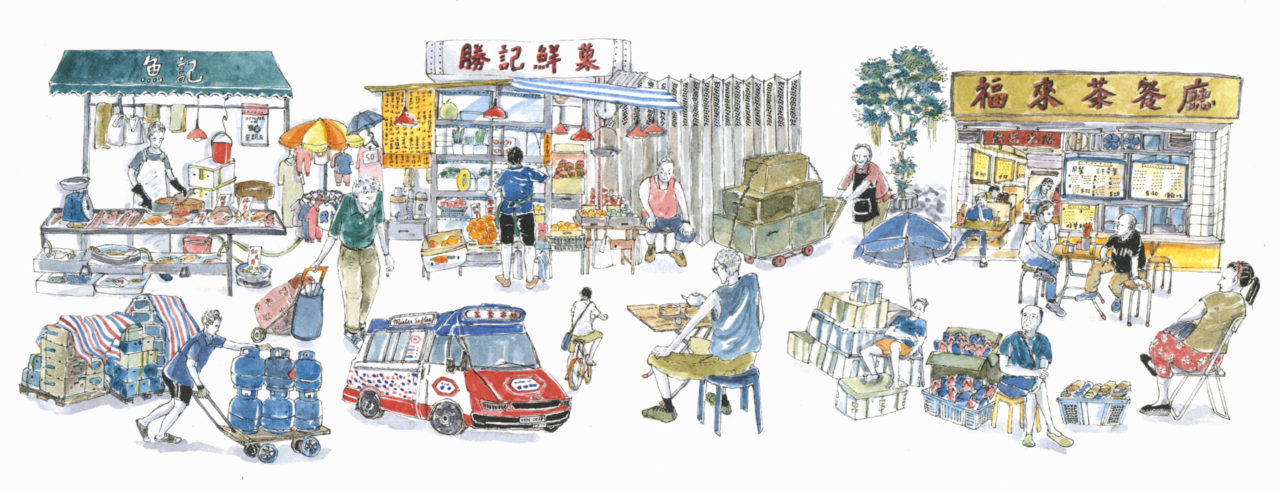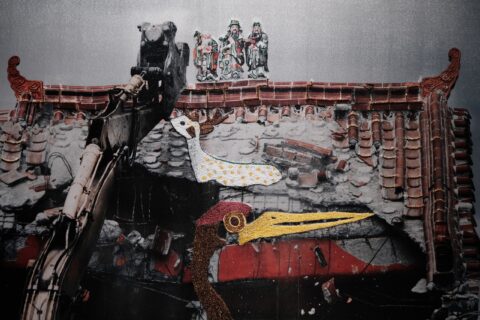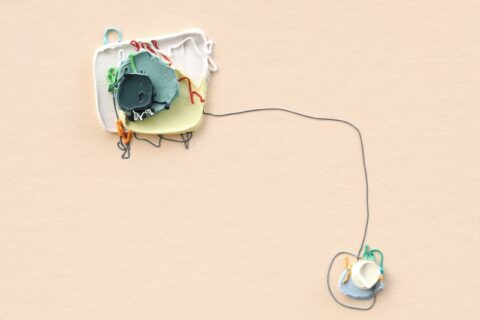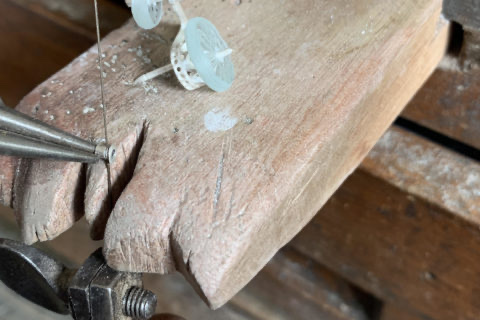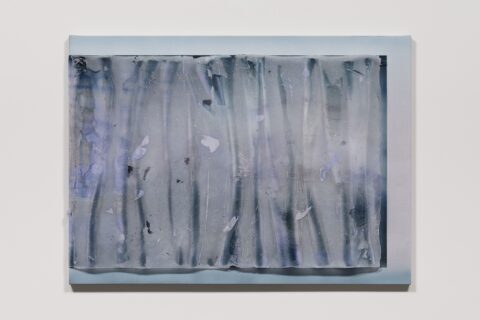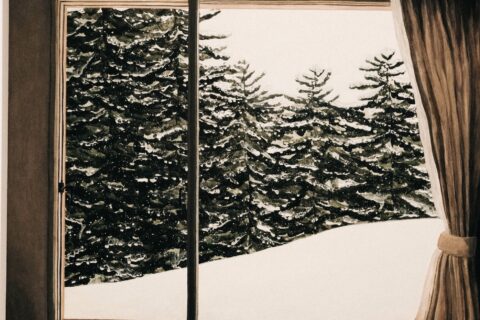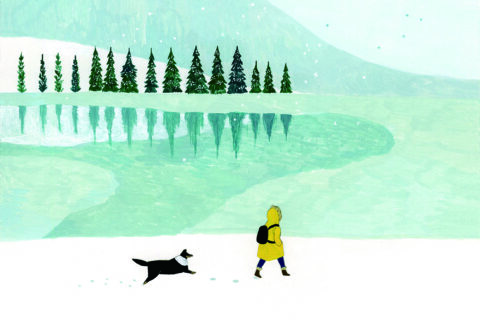
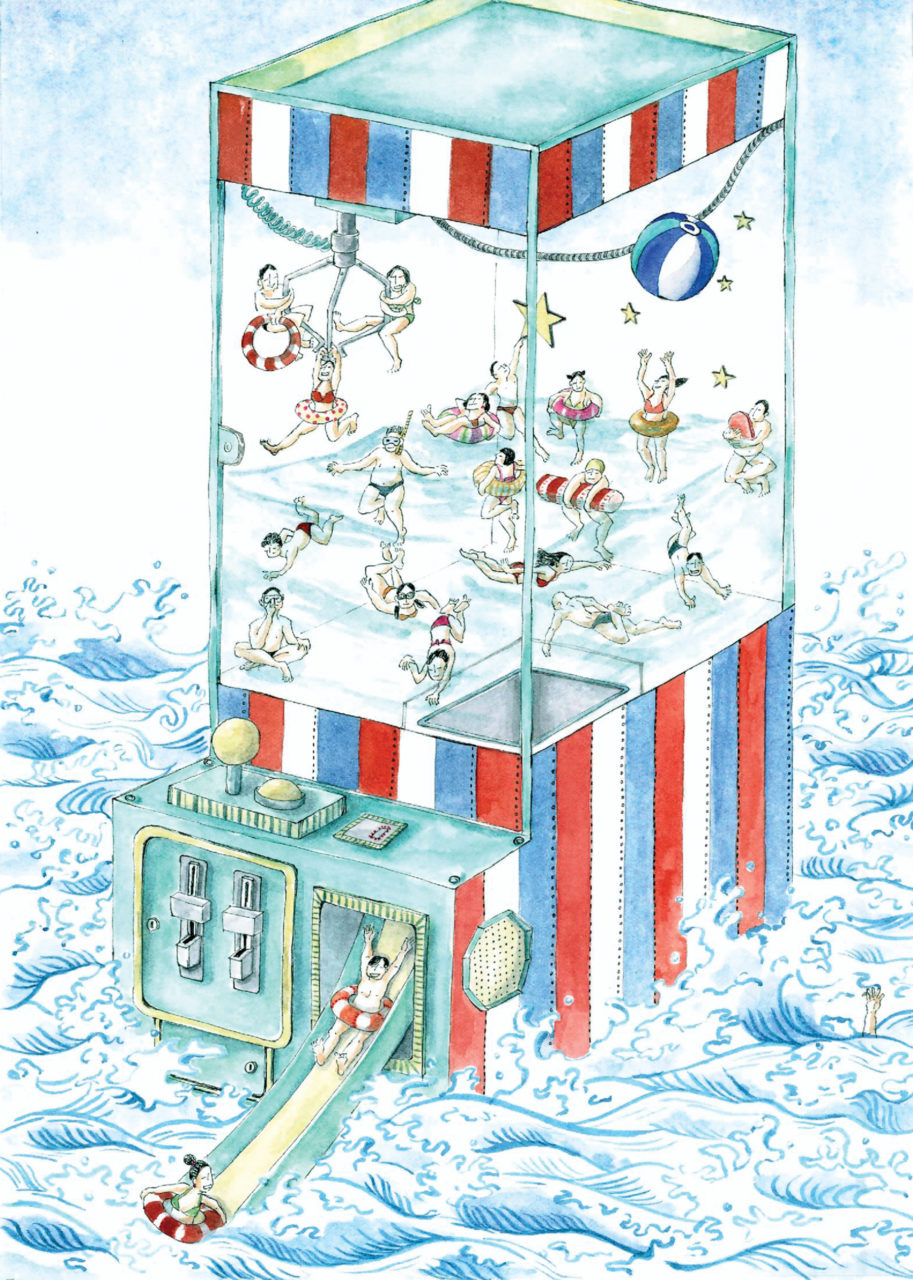
「這是她第三天緊抱著機爪,除了因為畏水,她認為應該用更多的時間冷靜地想想。畢竟,每一個逃到外面的身影幾分鐘內就會消失在茫茫大海中。
誰知道漂流會不會比掛在機爪上更累?」
Janas(劉佩佩)在我們最新一季的雜誌裡以〈The Place We Belong, To Each and Every HongKonger〉為題,創作出一系列歡樂又充滿想像力的插畫。其中一幅描畫大海裡有一部扭蛋機,人們在裡面樂而忘返地玩耍,有些人則滿心歡喜地滑出了大海,既可愛又童真的畫面卻配上了讓人憂愁的文字。這些插畫讓我想起西西的《我城》,雖然時代不一樣,但同樣是在描寫香港複雜又令人糾結的現實,以及表達難以言喻的情感。「這系列大概是四、五月時畫的,在疫情下畫這些色彩繽紛、充滿歡樂氣氛的畫,也算是苦中作樂吧。系列以香港為背景,當中藏著不少的隱喻,例如其中一幅畫了一個個放金魚的膠袋,裡面換了各式各樣的人,好像在旺角金魚街的金魚一樣,被掛起來並展示著。這些金魚袋代表了香港壓迫的生活環境,也在刻畫出疫情下城市被封鎖、人們被迫留在家中避疫的情景。」
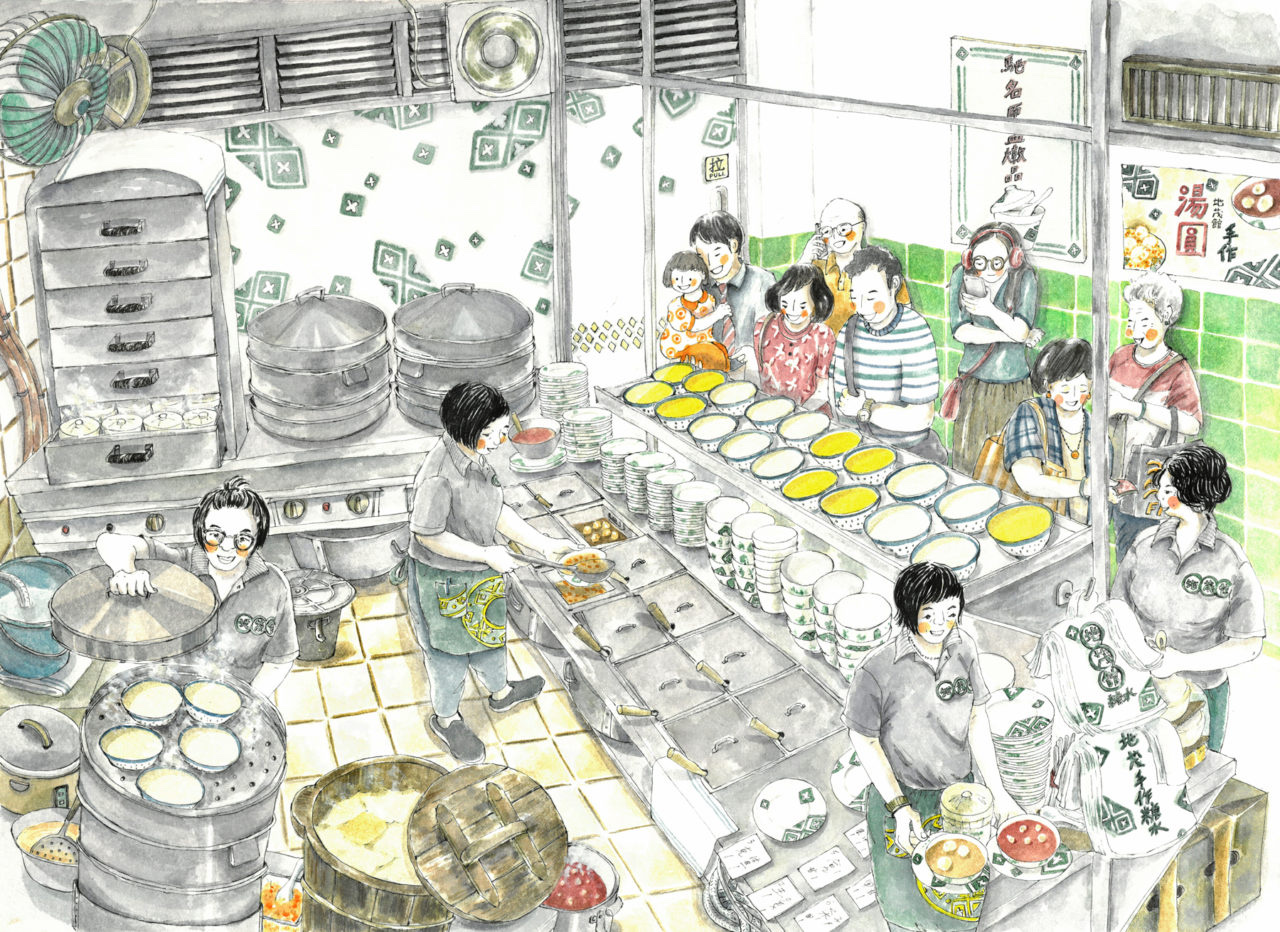
Janas說這系列中她最喜歡的畫是大海裡的扭蛋機。「這幅畫正好體現香港現在的情況,有些人想離開,有些人想留下來,然而誰都不知道哪一個選擇比較好。」走出了我城,卻無法預料風高浪急,人在異鄉,會更想念家嗎?「因為丈夫在倫敦工作的關係,數個月前我也在這裡定居下來。現在正努力適應著倫敦的生活,必須讓自己喜歡上這個地方呢。」Janas說要在一個城市裡生活而不是生存的話,不能不喜歡這個城市。「我正在苦惱著如何與這城市培養感情。」
Janas就像滑出了扭蛋機的人,即使大海裡大風大浪,她仍然在奮力地游,雖然偶然會回頭看看扭蛋機裡的風景。「我在倫敦修讀兒童繪本及漫畫小說碩士課程時的畢業作品《何處是吾家》就是以我成長的地方——香港為主題,一共花了三、四個月來完成。那時候,同學們大都以動物等為繪本的主題,我卻想畫一些熟悉的東西,同時也可以讓別人多點了解香港。」《何處是吾家》是一部反映香港社會的作品,主角明仔與家人一同住在擠迫的劏房,卻因為一場火災而被摧毁,被迫搬遷到新界的鐵皮屋。當他感受到鄉郊生活的美好,並愛上了美妙的大自然後,因為政府和地產商收地而再一次離開,讓人思考哪裡才是最安穩的家?「小時候曾經一家九口住在三百尺的屋,也曾經在粉嶺馬屎埔和北海道當農夫。我把生活經驗放在這部作品裡,也想藉此反思人的基本生活質素是甚麼?如何能使香港成為一個理想的生活地方?」
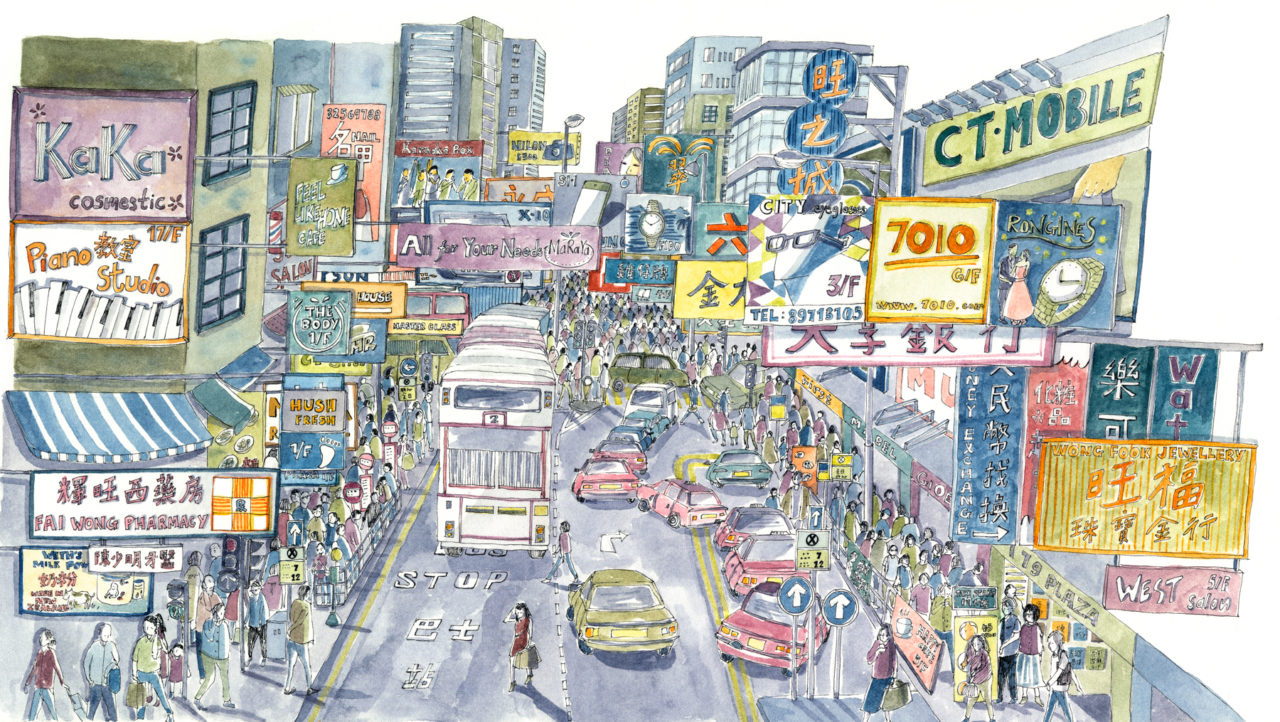
《何處是吾家》裡的香港滿是密密麻麻的大廈、擠擁的廣告牌和熙來攘往的街道,Janas豐富細膩的畫風把香港的特點表露無遺,這種觀察力來自她一邊走路一邊觀察的習慣。「在日本進修攝影時,我很喜歡在街上四處張望,由上野步行至新宿,一邊走一邊發掘新鮮事物。當時網絡資訊未有現今般發達,很多新鮮的事情都是透過自己親身去發現。這段期間,我經常去看有關攝影和插畫的展覽,認識了一班插畫家朋友,讓我對插畫產生興趣,並嘗試透過繪畫去表達自己拍下來的東西。對我來說,繪畫最有趣的地方是能夠以自己的角度把一瞬間記錄下來,看著自己一幅幅的畫,就如翻開自己的相簿一樣。」
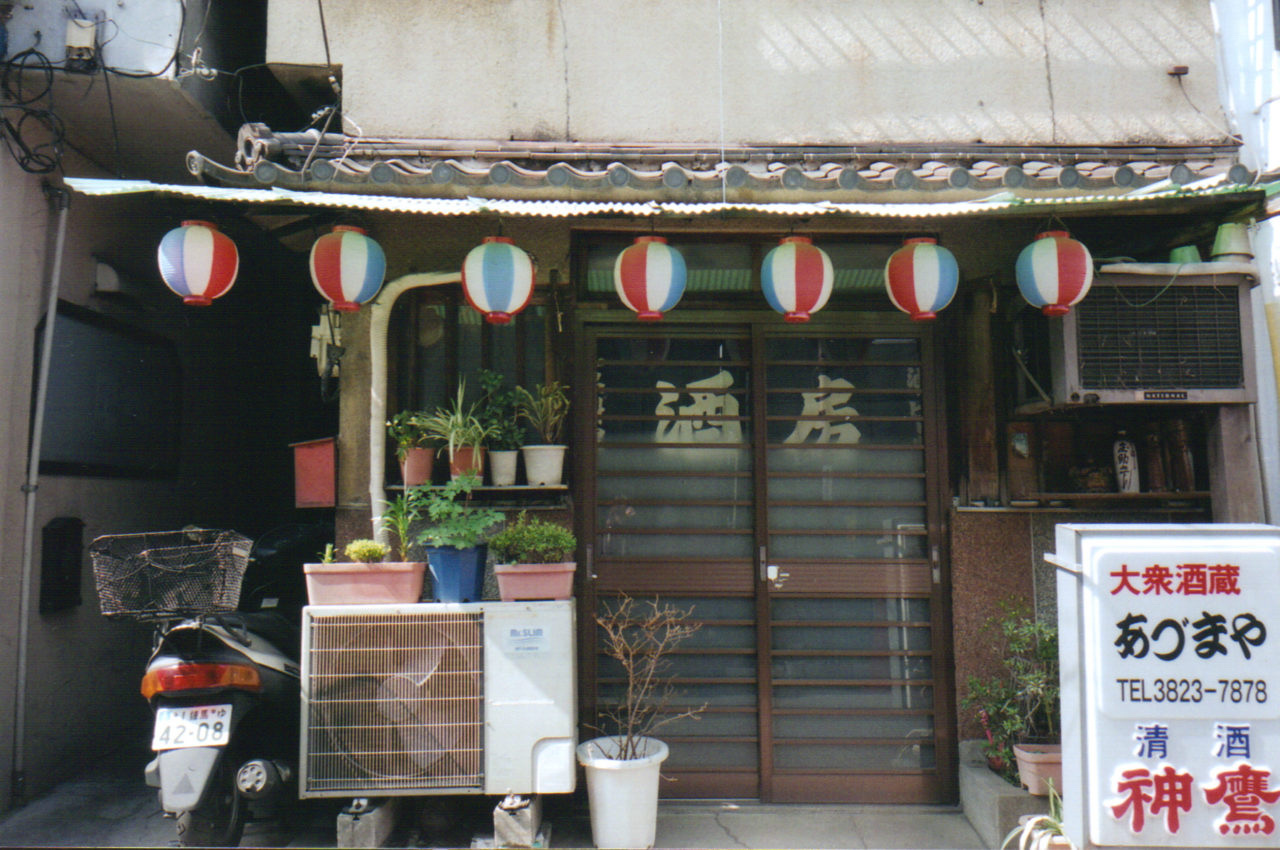
Janas說她不是一個天才型的畫家,很多時候要掙扎良久才能動筆。「我是由畫火柴人開始的。」她笑說,「我在日本進修時,深深地喜歡上浮世繪的藝術風格,即使是畫裡的一個小角落都充滿了讓人看不完的細節。竹久夢二和蕗谷虹児都是我很喜歡的畫家,在日本居住時,我常常去弥生美術館,那是專門展覽日本二、三十年代的美人畫的美術館。我特別喜歡蕗谷虹児的黑白線條畫。我由模仿喜歡的作品開始,慢慢地建立自己的風格。最近愛看葛飾北齋畫的人物畫,看著市井裡的人,每個人都有他的表情和動作,十分有趣。除了美術館,因為學校在市ヶ谷的關係,我很喜歡經神保町的舊書街一直走到上野才坐地鐵回家,有時候會在上野恩賜公園內的國際兒童圖書館坐上幾小時。那是一座很美的大樓,有很多很多的兒童圖書,不但讓我大開眼界,也因為接觸了多了,很順其自然地畫起繪本來。」Janas說學習攝影訓練了眼晴對事物的敏銳度,而日本文化則影響著她對每一個細節的執著。雖然她說自己是一個沒有耐性的人,每次執筆也想著要快點完成,但她的畫總是如此細緻入微,每一次看都會有驚喜。「畫畫使我更有耐性,有時候需要拿著間尺去慢慢畫,但心裡真的希望有捷徑去完成呢。」
《我城》裡阿果的同學阿遊夢想環遊世界,他離開了城市,到了遙遠的地方,心卻仍是念著這「又美麗又醜陋的城」。Janas也一樣,無論她身在何處,心仍離不開香港。「我很相信『心之所在,家之所在』這句話,香港是我成長的地方,這裡有我的朋友和家人,我自然地希望這個地方變好,因為這裡才是我真正的家。」
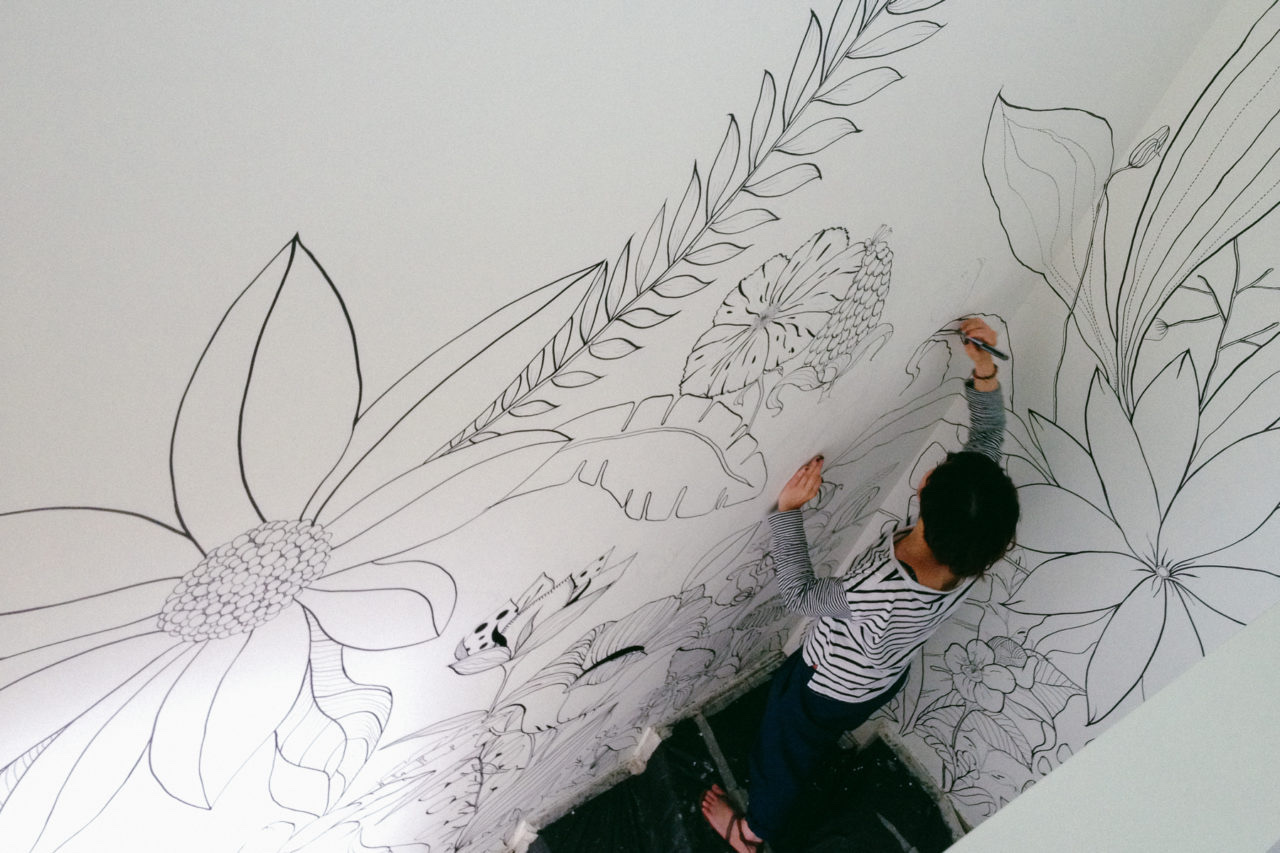
“This is the third day in a row that she has to tightly clutch on the robotic claw. This is partly due to the fact that she is aquaphobic, but the stronger reason is that she believes she should spend more time analyzing the whole situation. Everyone who escaped to the outsider world was consumed by the vast sea, disappearing into the swirls within minutes.
Who knows if drifting out there is even more exhausting than hanging here on the claw?”
In our latest issue, we featured a series of joyful and imaginative illustrations titled “The Place We Belong, To Each and Every Hong Konger” by Janas Lau. In one of the illustrations, we can see a gigantic gashapon machine floating in the sea. There are people partying inside the machine with some others having fun on the slippery slide that connects to the sea. This cute and innocent illustration comes with a contrastingly mournful caption. Janas’ works remind me of XiXi’s My City as they both capture vividly the complicated reality and unspeakable emotions of Hong Kong, though in different eras. “I did this series back in April or May. Painting with such vibrant colors and on a seemingly cheerful theme is probably a joy in suffering during the time of pandemic. For this series, I’ve chosen Hong Kong to be the background, and incorporated some metaphorical elements within. For example, there is an illustration that shows various types of humans being placed in clear plastic bags that are filled with water. If you’ve ever visited Goldfish Street in Mongkok, you’d probably know that these bags are actually used to hold the pet fish for sale and often hung up on shelves for display. These plastic bags represent the oppressive living environment of Hong Kong. They also signify the confinement that people have to endure when the city is locked down during the pandemic.”
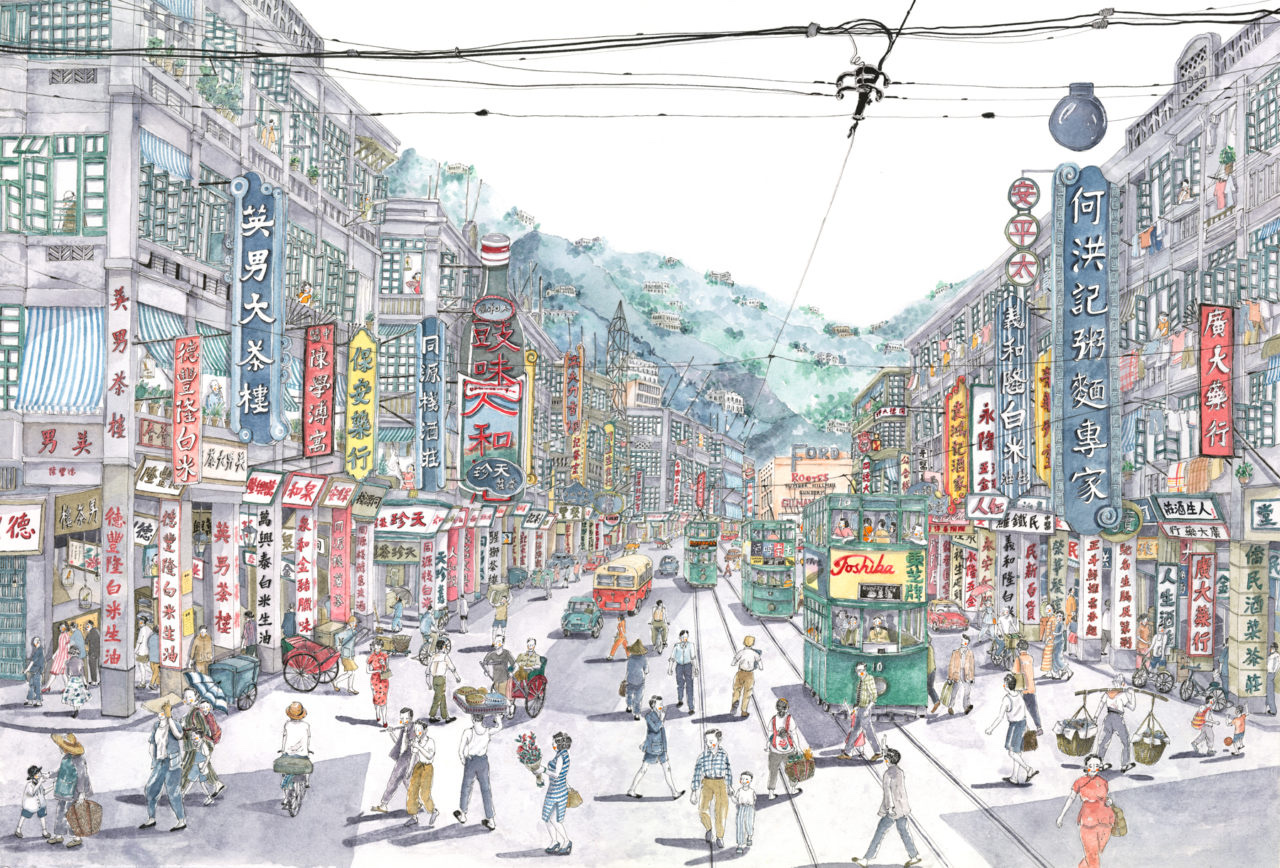
The illustration of the gigantic gashapon machine floating in the sea is Janas’ favorite in the series. “This painting perfectly reflects the current situation in Hong Kong; some people want to leave, some people want to stay, yet nobody knows which is the right thing to do.” Leaving your hometown to move to a foreign land, there are so many uncertainties and unknowns ahead. Don’t you miss home? “I moved to London a few months ago because my husband works here. I am trying to adapt to life in London. I just have to fall in love with this place.” Janas believes that in order to genuinely live in a city instead of merely surviving, one has to fall in love with it. “I keep thinking how I can connect with this city.”
Janas is probably one of those who jumped on the slippery slide and slipped out of the gashapon machine. Out in the open sea, she tries so hard not to back out amid the rolling waves and bitter winds. Occasionally, she’d turn around and take a look at the gashapon machine. “I did a Master degree in Children’s Book Illustration and Graphic Novels in London. For my final-year project, Where is My Next Home?, I picked Hong Kong, the place I grew up, as a theme. It took me over three months to complete the book. At that time, most of my classmates chose to draw animals, but I wanted to draw something that I am familiar with, and I also wanted to let people know more about Hong Kong.” Where is My Next Home? is a mirror image of contemporary Hong Kong. The story begins with the depiction of the protagonist, Ming, living in a tiny partitioned-flat with his family, and how an arsonist attack left them homeless and forced them to move to the remote New Territories. As the family gradually adapted to their new life in beautiful nature, they were once again being forced to leave their home as the government and land developers decided to resume the land where they lived. Ming’s story makes people wonder where we can find our final home. “I grew up in a family of nine and we onced lived in a 300-square-foot cramped flat. I’ve also worked as a farmer in Fanling’s Ma Shi Po and Hokkaido in Japan. I put all these personal experiences in my book in a hope that my readers can think about what is the basic quality of human life, and how can Hong Kong become an ideal place to live?
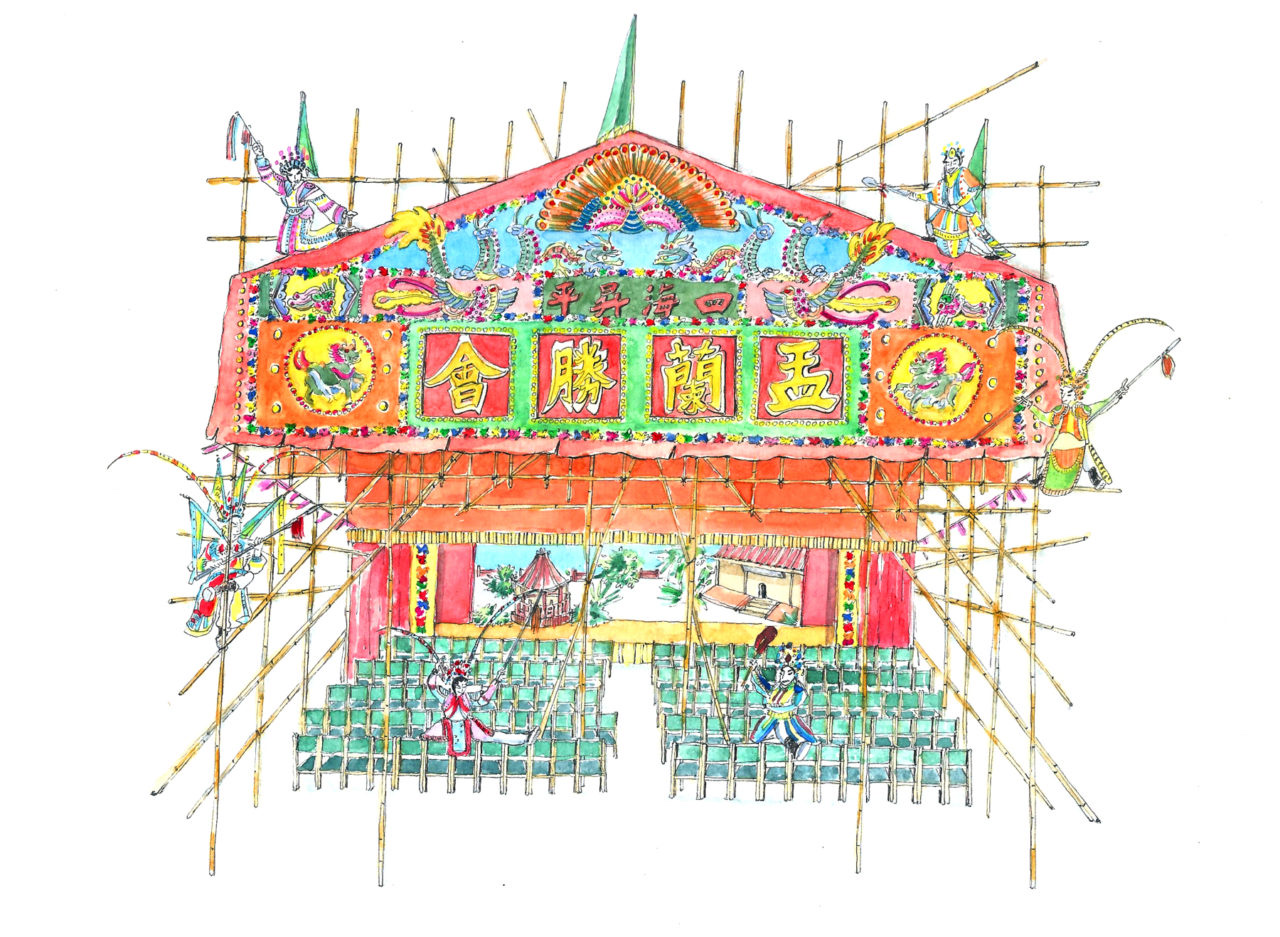
Janas’ attention to detail and delicate painting style is fully reflected via the illustrations of the bustling streets and densely packed buildings and billboards in Where is My Next Home?. Janas developed such extraordinary observation skills from walking. “When I was studying photography in Japan, I walked from Ueno to Shinjuku all the time. I observed as I walked and there were so many new things to discover. At that time, the internet was not as developed as it is nowadays. I had to explore and discover new things by myself. During that period, I often went to exhibitions on photography and illustration, and made some illustrator friends. They planted the seeds of curiosity in me, and I began to draw based on the photos I took. For me, the most fascinating thing about painting is that I can capture the decisive moments from my own perspective. Looking at my own paintings is like flipping through my own photo album.”
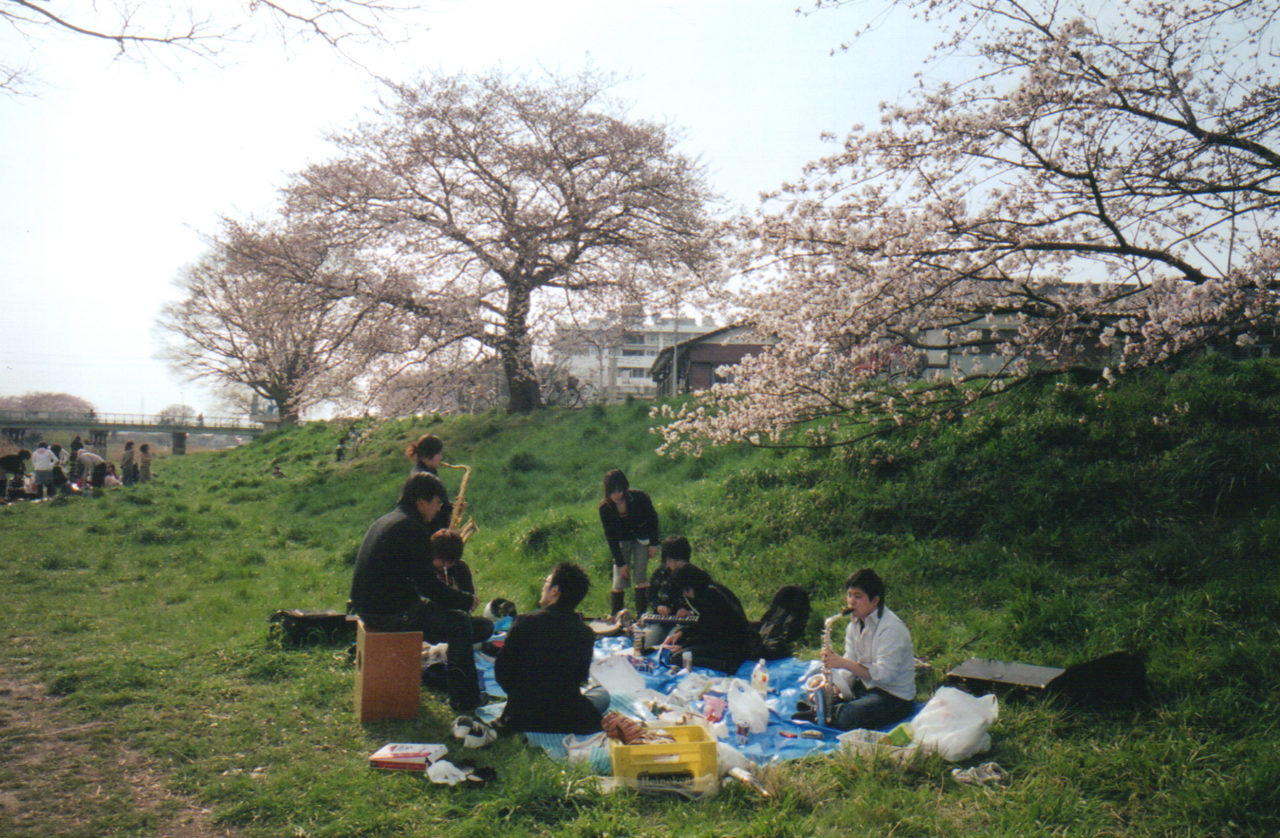
Janas said that she is not a genius painter, and often she struggles to get inspired. “I started by drawing stick men.” She laughed and said, “When I was studying in Japan, I fell deeply for the Ukiyo-e style for there are so many details even in a tiny corner of the painting. Takehisa Yumeji and Fukiya Koji are my favorite painters. I often went to the Yayoi Museum of Art when I lived in Japan. They specialized in curating paintings of Japanese beauties from the 1920s and 1930s. I am especially fond of Fukiya Koji’s black and white line drawings. I started by imitating my favorite works and slowly established my own style. My recent favorite is Katsushika Hokusai’s figure paintings. Each character has his own expressions and actions. It’s so fascinating. Besides visiting art museums, I like to stroll through the old book street of Jimbocho and walk all the way to Ueno because my school is located in Ichigaya. After the walk, I’d take the subway home. Sometimes I’d sit for hours in the International Library of Children’s Literature in Ueno Onshi Park. That is a very beautiful building filled with tons of children’s books. Visits to the library broadened my horizon tremendously. As time went by, I started to develop my own style and draw naturally.” Janas said that photography has sharpened her awareness and sensitivity to the surroundings, while the Japanese culture has a great impact on her devotion to details. Although she describes herself as an impatient artist who always wishes to finish a painting as quickly as possible, you will be surprised to see how meticulous her works are. “Drawing makes me more patient. But still, I wish for a shortcut so that I can finish the work quickly.”
In My City, Swim, the protagonist Fruits’s classmate, dreamt of traveling around the world. He left the city and went somewhere far away, yet his heart still lingers on this “both beautiful and ugly city.” The same goes for Janas; no matter where she is, she still thinks of Hong Kong often. “I truly believe ‘home is where the heart is.’ Hong Kong is where I grew up and where my friends and family reside. Of course I hope Hong Kong can turn into a better place. Because Hong Kong is my real home.”
